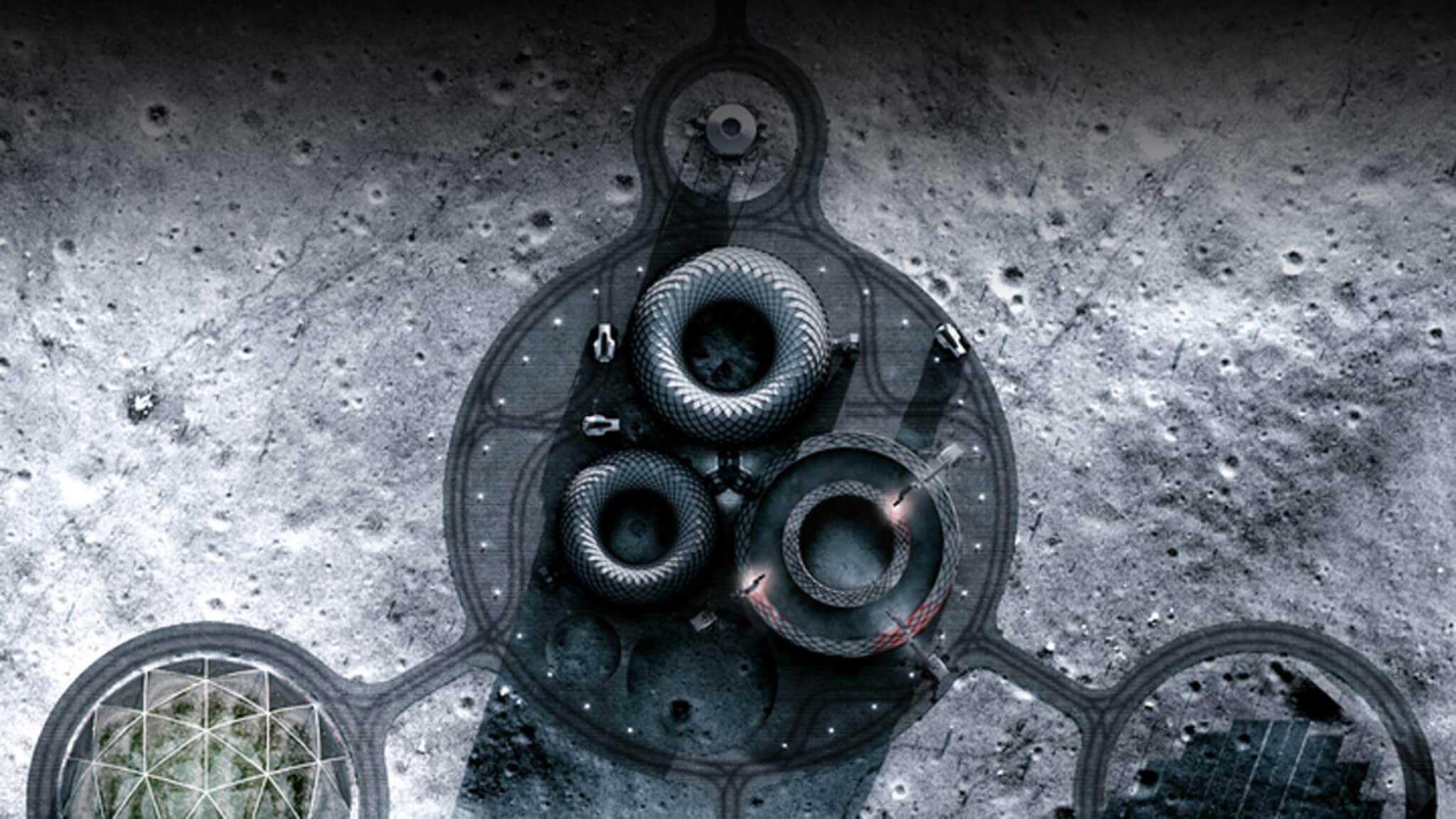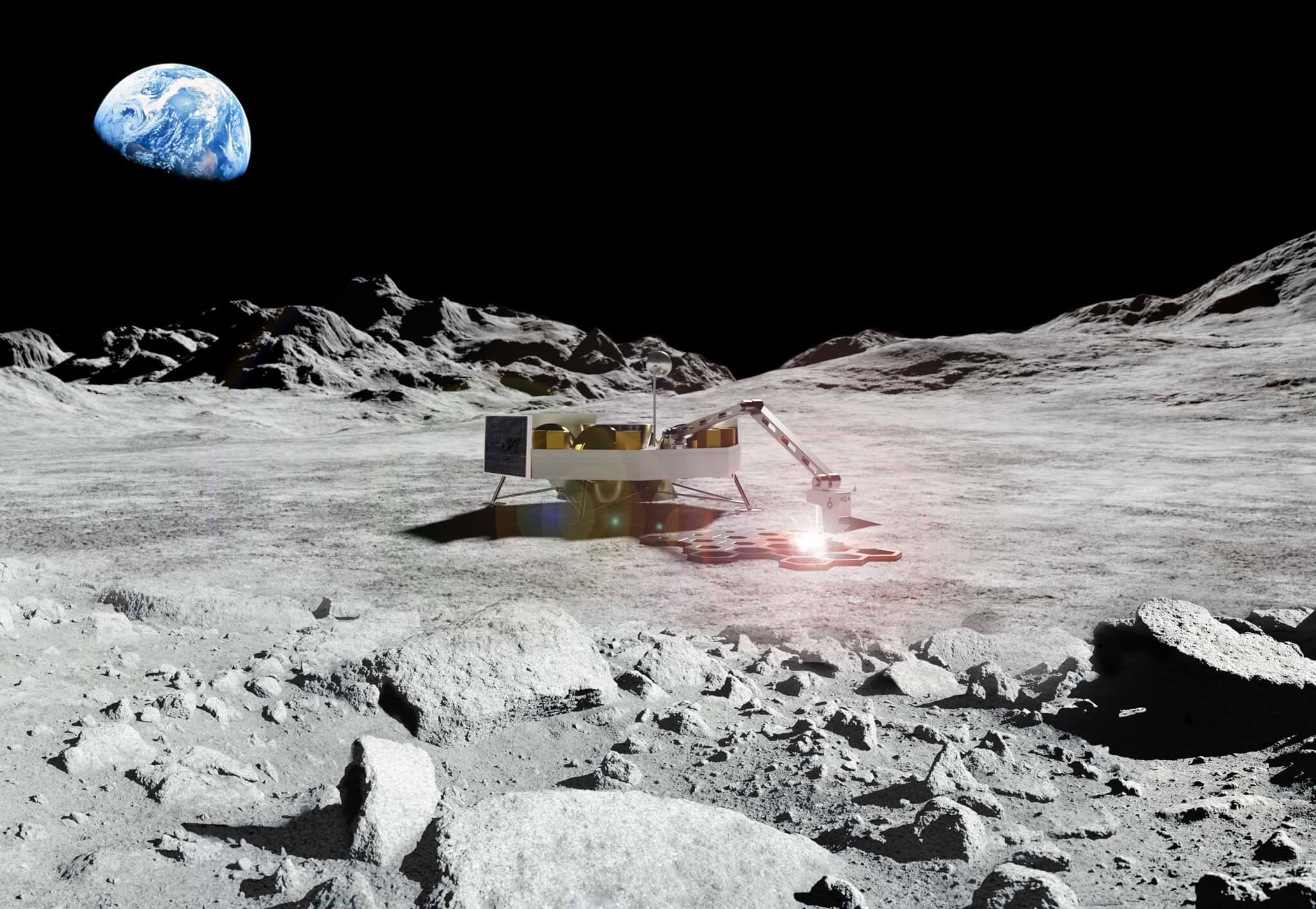Just weeks after ICON, the 3D printing technology company, broke ground on what is slated to be the largest 3D printed neighborhood, the Texas-based company is using its expertise and construction systems on an even larger project: lunar habitation. Yesterday, NASA, through its Small Business Innovation Research (SBIR) program dolled out a nearly $60 million contract to ICON that will allow for continued exploration of outer space environments, including the Moon and Mars.
This isn’t the first time the U.S. agency and the 3D printing company have teamed up. In 2021, alongside architects at Bjarke Ingels Group (who also codesigned the aforementioned neighborhood), they designed an experimental habitat built to sustain long-term habitation on Mars. The 1,700-square-foot Mars Dune Alpha developed as part of this program uses ICON’s Vulcan robotic construction system. This device is also the technology used to construct ICON’s 3D-printed neighborhood. It will be an integral part of NASA’s Crew Health and Performance Analog (CHAPEA), an analog mission, launching in 2023, that will simulate one-year on Mars.

This latest round of funding will go toward ICON’s Project Olympus and support NASA’s Artemis program to fabricate and realize a habitat on the Moon, a lofty project announced back in 2020. Developing any sort of abode can be challenging, but developing habitats able to withstand extreme temperatures, fend off radiation, and withstand barrages of micrometeorites is new territory.
Like here on Earth, long-term habitation in outer space requires more than just a place that is warm, safe, and dry. Lunar life will also likely require infrastructure such as roadways in addition to spacecraft landing pads and blast shields. ICON’s plans heed a “live off the land” approach, in which the terrain’s readily available materials—mostly rocks and soils—found on the surface of the Moon and Mars will be used in the research and fabrication of the planned habitat. This is a change from ICON’s printing on Earth, which uses Lavacrete, a concrete-polymer contoured into facades and foundations one layer at a time.
“To change the space exploration paradigm from ‘there and back again’ to ‘there to stay,’ we’re going to need robust, resilient, and broadly capable systems that can use the local resources of the Moon and other planetary bodies. We’re pleased that our research and engineering to-date has demonstrated that such systems are indeed possible, and we look forward to now making that possibility a reality,” ICON Cofounder and CEO Jason Ballard said in a press release.
As part of the program, ICON will work with NASA on a lunar gravity simulation flight and test rock and deposit samples from previous Apollo missions to evaluate how well they fare under lunar gravity. These discoveries will ultimately lead to, as Ballard put it, “humanity’s first construction on another world.”

“In order to explore other worlds, we need innovative new technologies adapted to those environments and our exploration needs,” added Niki Werkheiser, director of technology maturation in NASA’s Space Technology Mission Directorate. “Pushing this development forward with our commercial partners will create the capabilities we need for future missions.”
ICON’s SBIR contract runs through 2028, though when exactly the planned lunar habitat will touch down on the Moon is still up in the air.











